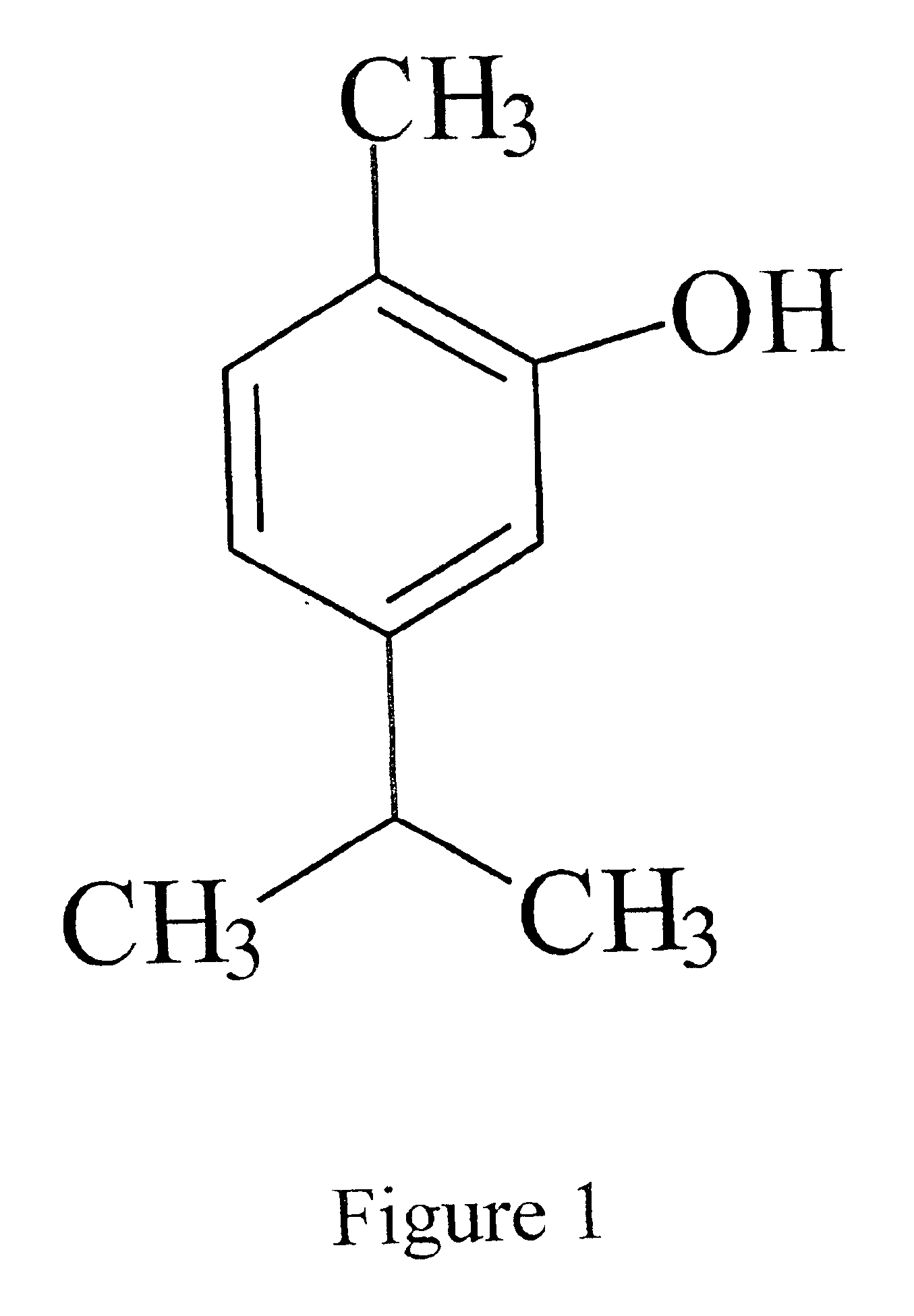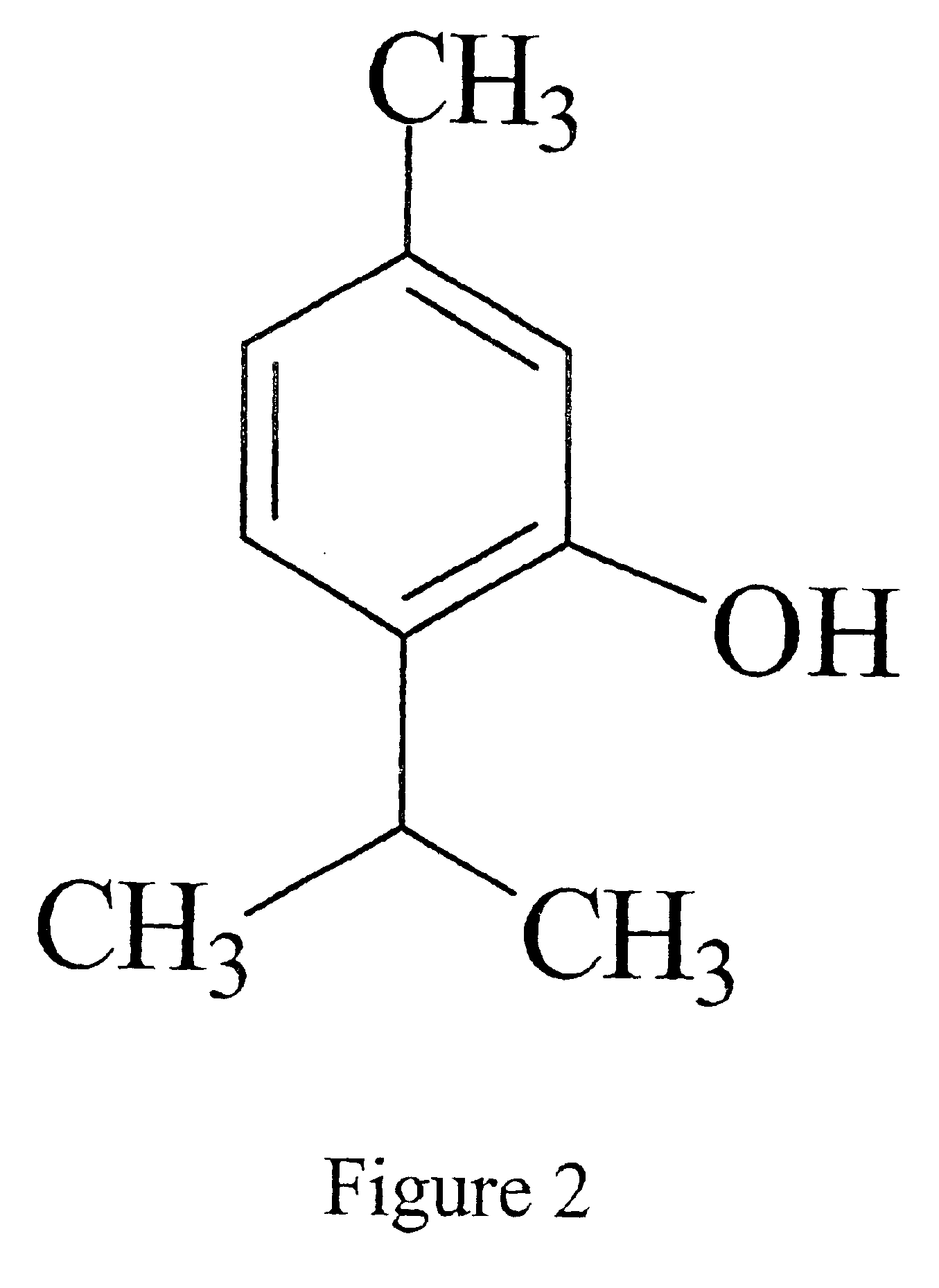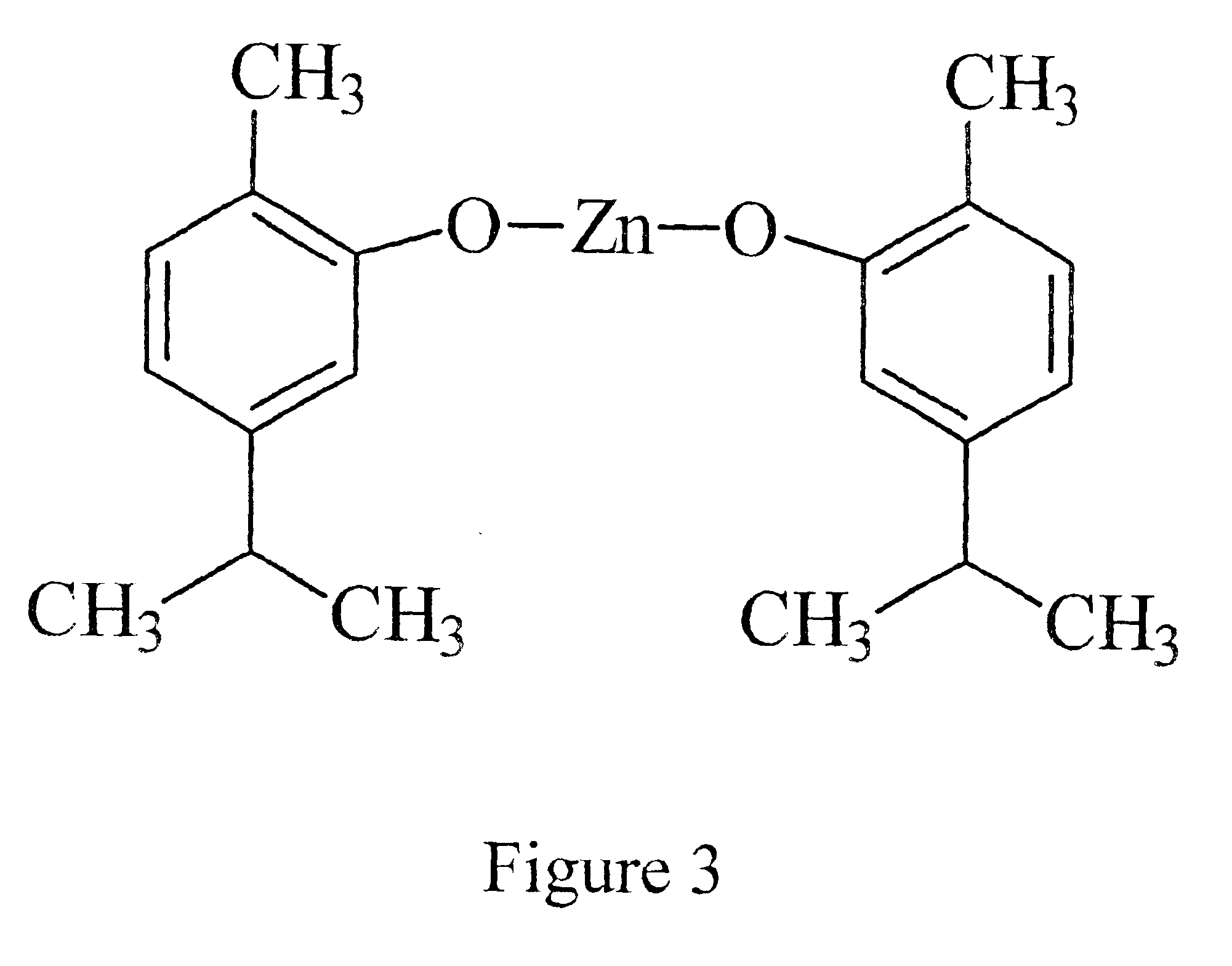Pesticidal compounds and compositions
a technology of pesticides and compositions, applied in the field of pesticide compositions, can solve the problems of large number of synthetic chemicals being released into the environment, unchecked, uncontrollable, etc., and achieve the effect of killing or inhibiting growth, and negative effect on individual pests
- Summary
- Abstract
- Description
- Claims
- Application Information
AI Technical Summary
Benefits of technology
Problems solved by technology
Method used
Image
Examples
working examples
IV. WORKING EXAMPLES
Example 1
Production of Hybrid Plant
A hybrid plant is produced by crossing the following species of plants belonging to the Labiatea and Verbenaceae families: Nepeta racemosa, Esholtia splendens, Cedrelopsis grevei, and Lippia graveolens. The hybrid plant is produced with methods well known in the art to give a resulting hybrid plant with the following proportions of the plants: 20% Nepeta racemosa: 30% Esholtia splendens: 20% Cedrelopsis grevei: 30% Lippia graveolens.
example 2
Extraction of Carvacrol and Thymol from Nepeta cataria
Carvacrol and thymol were extracted from Nepeta cataria using a two stage distillation process. In the first stage, dried leaves were extracted using a steam distillation process. After the distillation, the oil was cooled to room temperature for at least 72 hours.
The oil from the steam distillation process was then re-distilled in a second stage distillation process. In the re-distillation, the oil was heated to a temperature of about 186° C. for about 1 hour to remove remaining impurities such as linalool, barneol, pimen, and cimen. Generally, the impurities have a boiling point of about 150° C. In contrast, both carvacrol and thymol have a boiling point of about 230° C. to 240° C. Thus, a temperature of 180° C. will typically not remove or damage the organic phenolic products.
The oil was again allowed to cool for at least 72 hours. This step is thought to stabilize the oil.
After the oil is cooled, the redistillation is repeat...
example 3
Separation of Carvacrol from Thymol
Carvacrol and thymol were separated by incubating the distilled oil at a temperature of −25° C. for about 6 hours. Carvacrol remains as a liquid and thymol is precipitated out as crystals. The two compounds were then separated via filtration.
PUM
| Property | Measurement | Unit |
|---|---|---|
| Time | aaaaa | aaaaa |
| Time | aaaaa | aaaaa |
| Time | aaaaa | aaaaa |
Abstract
Description
Claims
Application Information
 Login to View More
Login to View More - R&D
- Intellectual Property
- Life Sciences
- Materials
- Tech Scout
- Unparalleled Data Quality
- Higher Quality Content
- 60% Fewer Hallucinations
Browse by: Latest US Patents, China's latest patents, Technical Efficacy Thesaurus, Application Domain, Technology Topic, Popular Technical Reports.
© 2025 PatSnap. All rights reserved.Legal|Privacy policy|Modern Slavery Act Transparency Statement|Sitemap|About US| Contact US: help@patsnap.com



